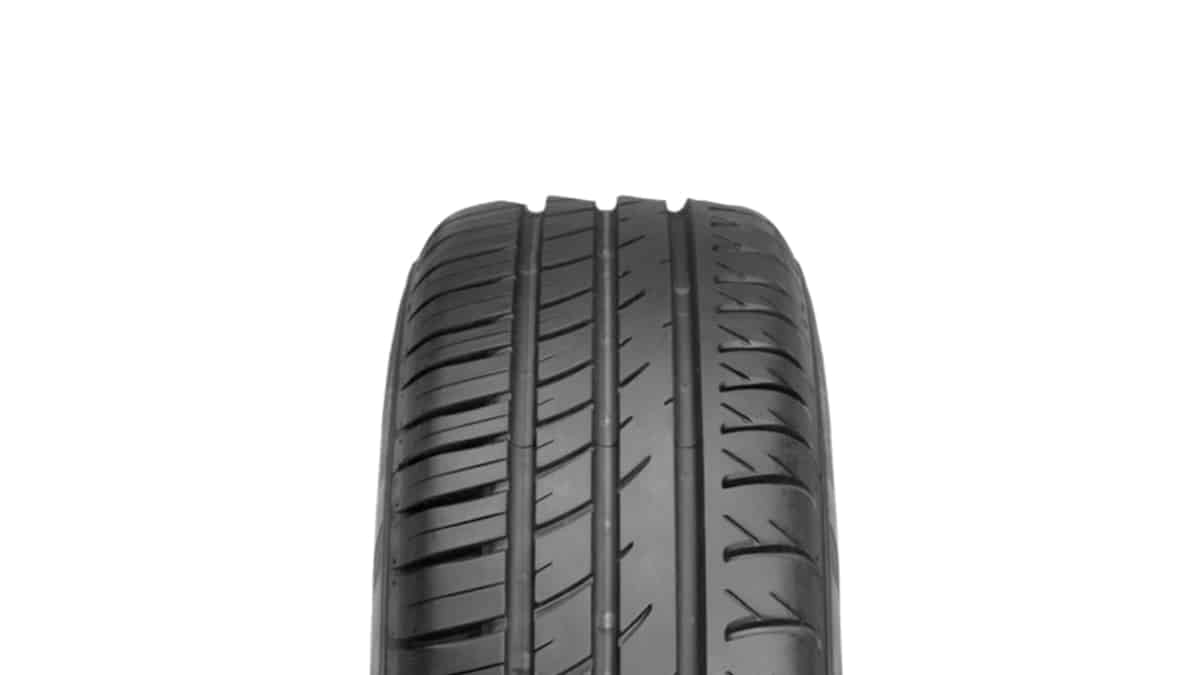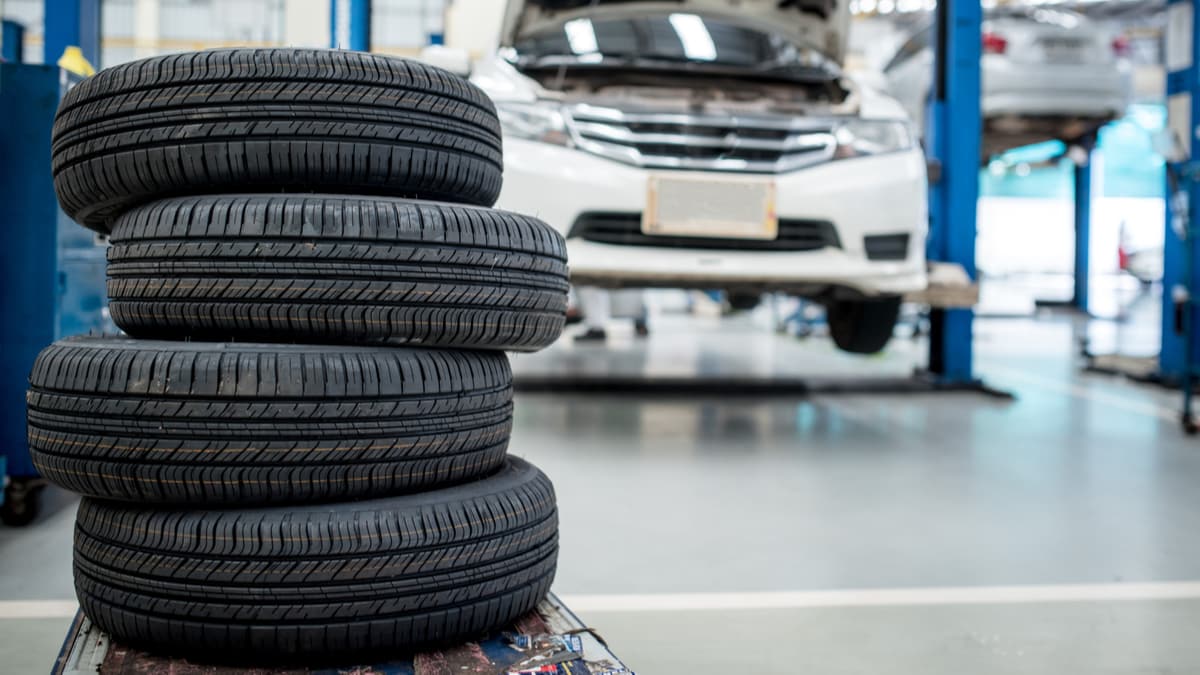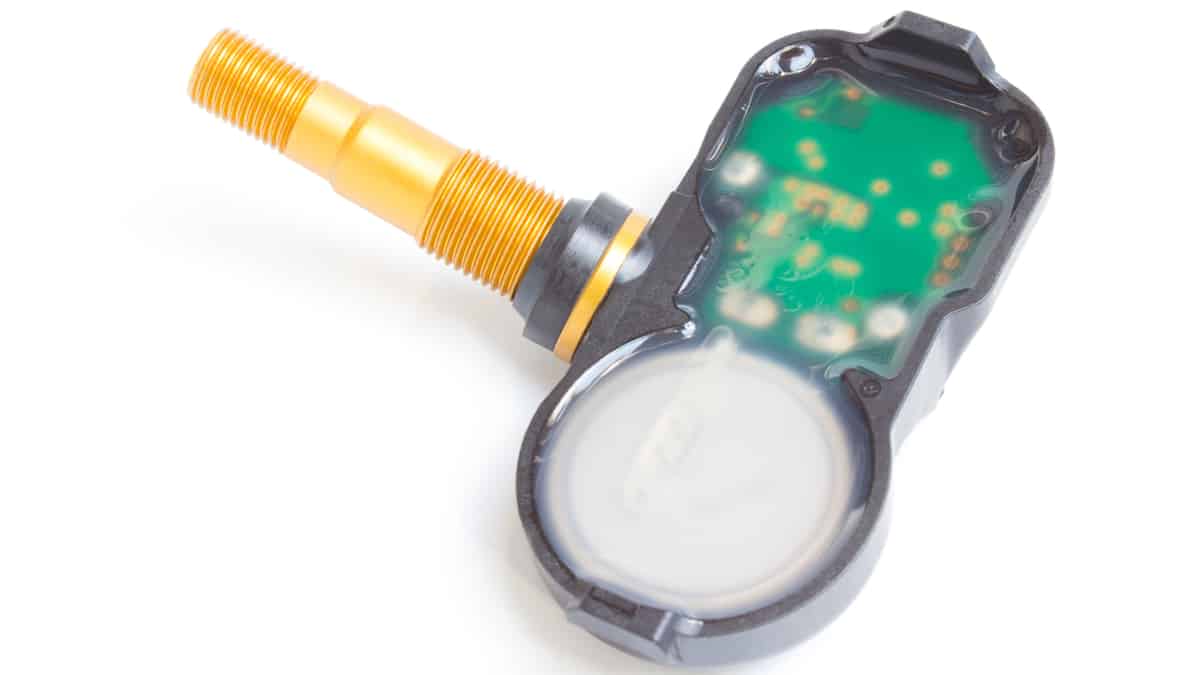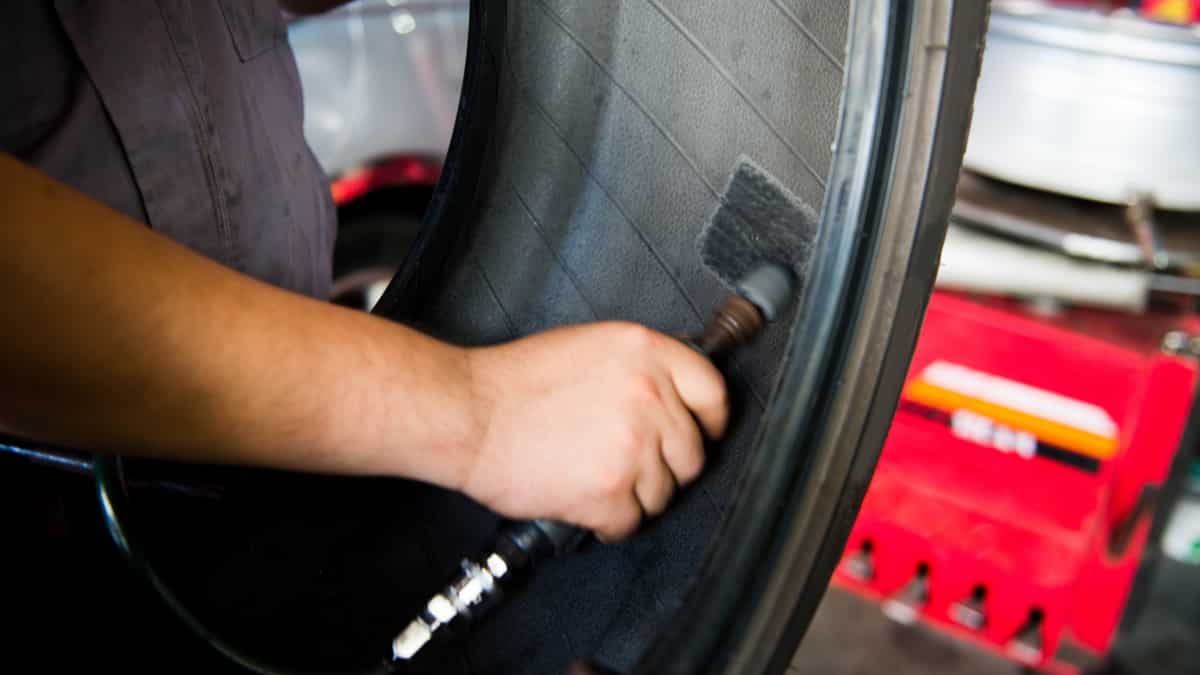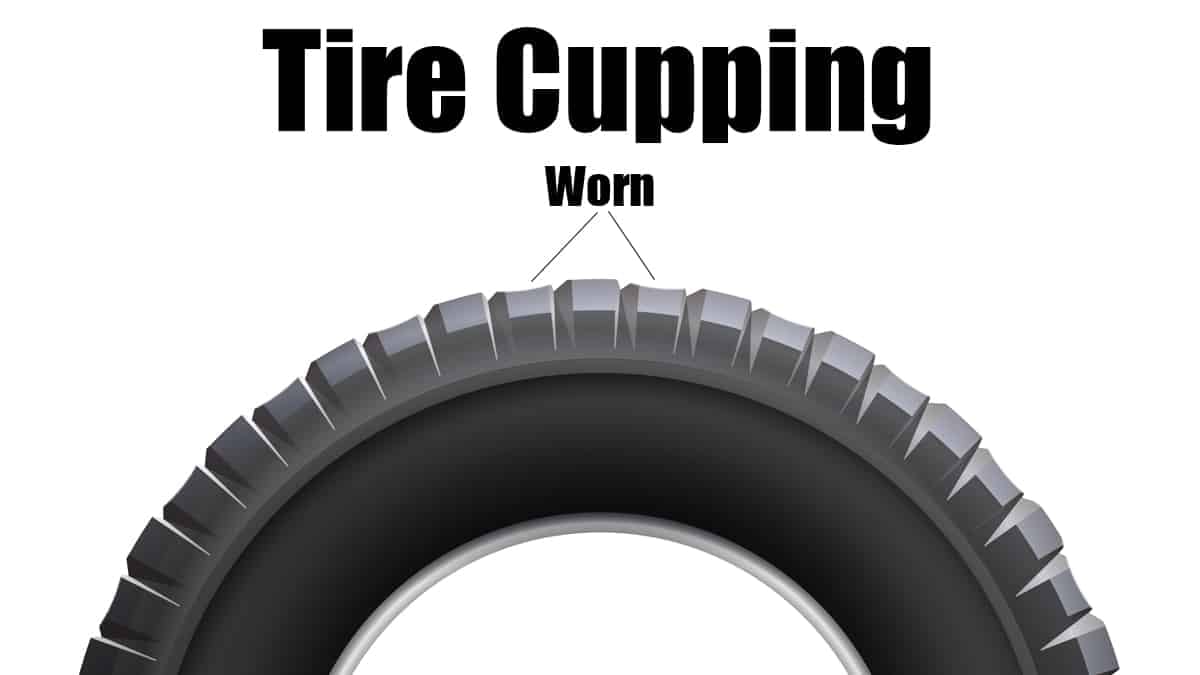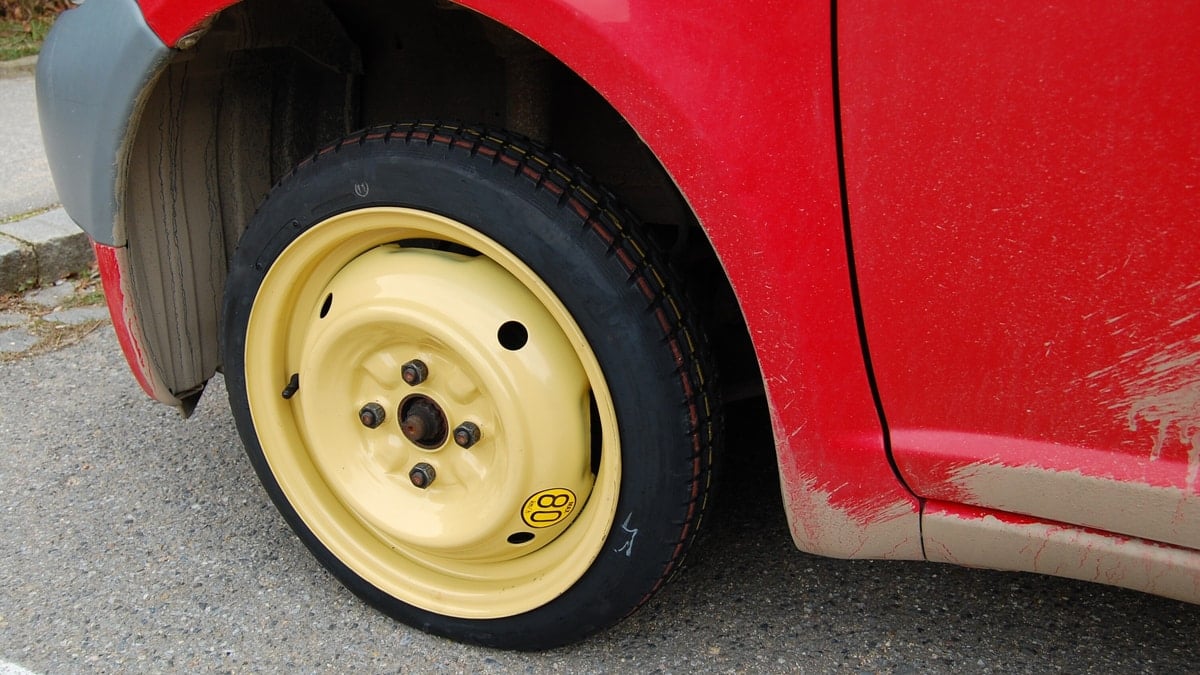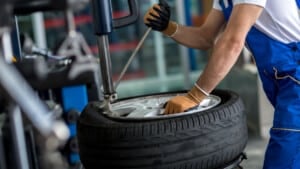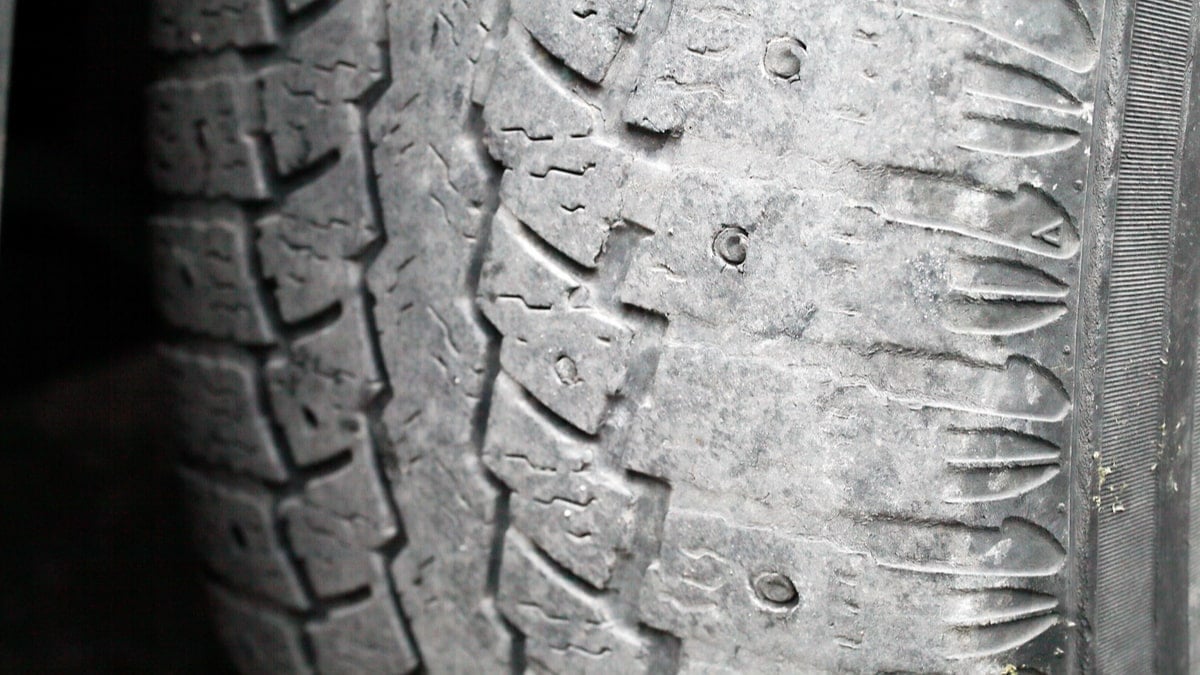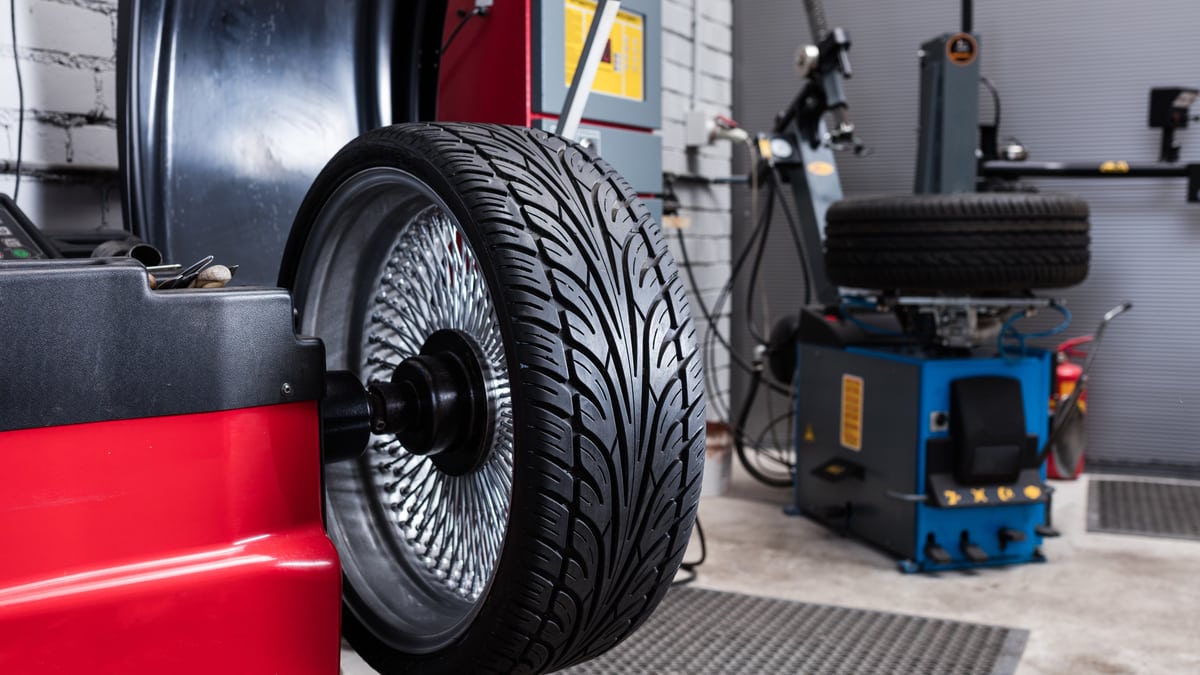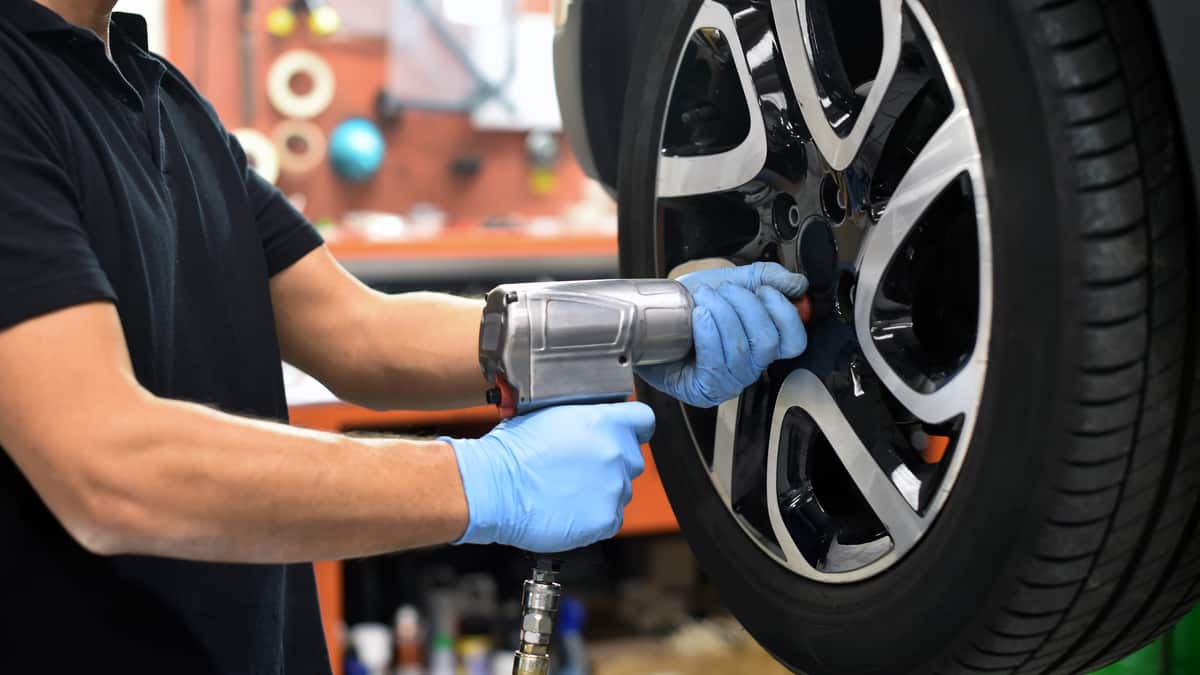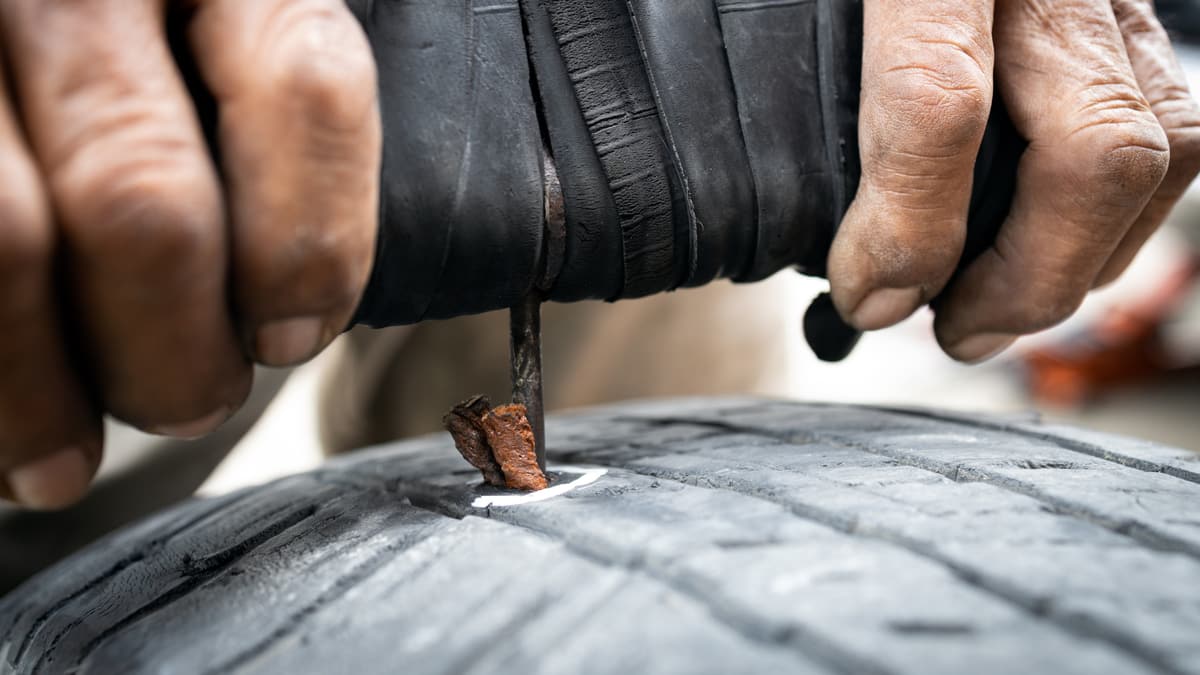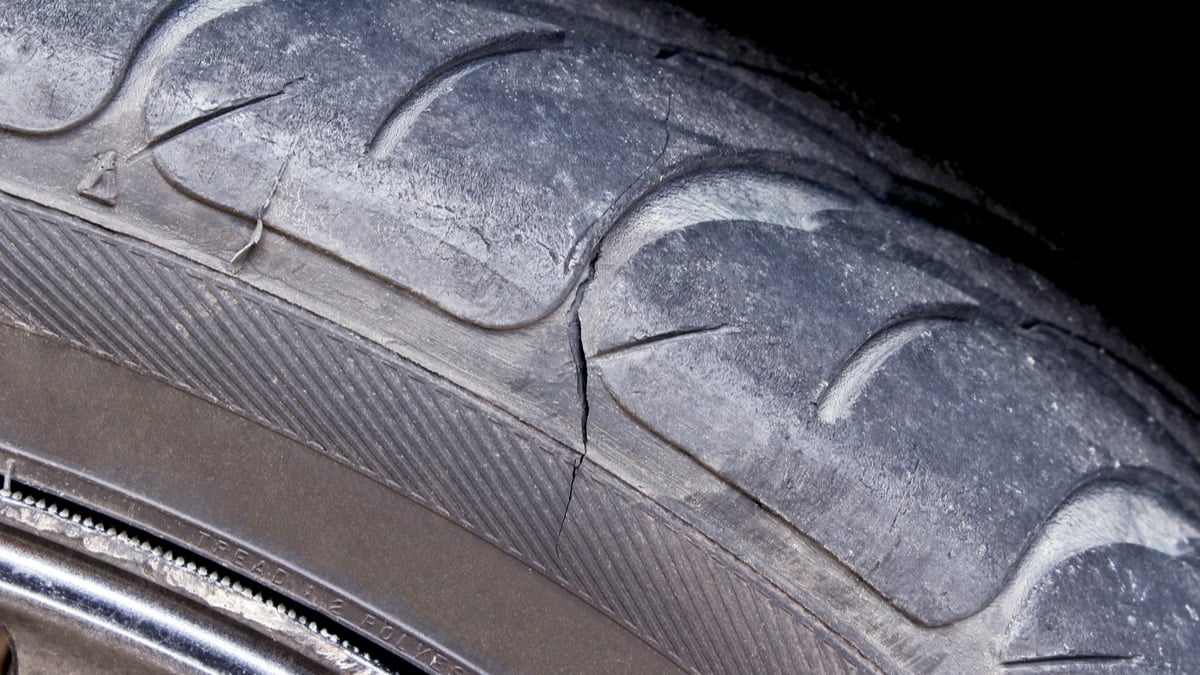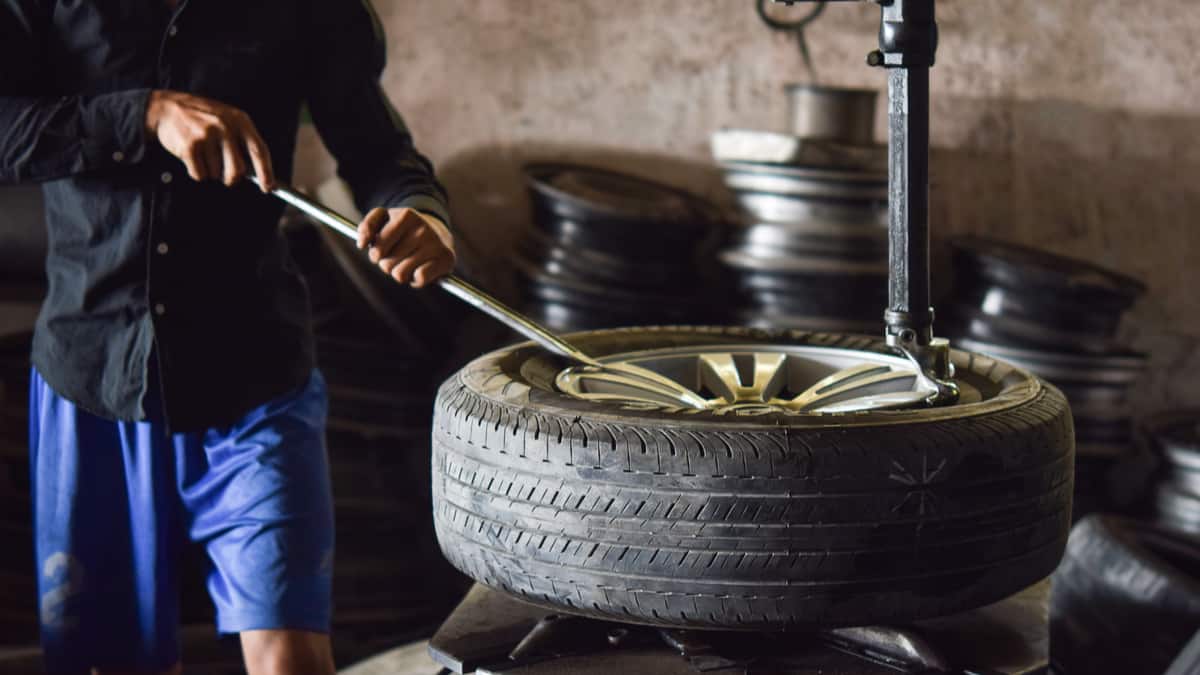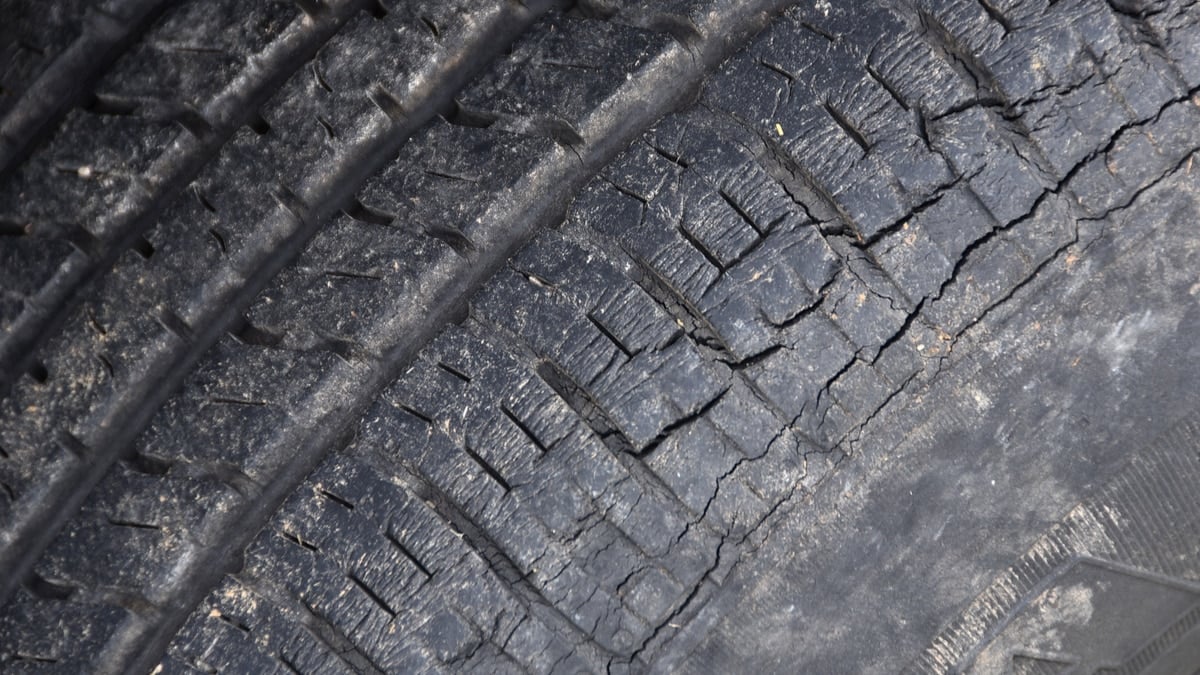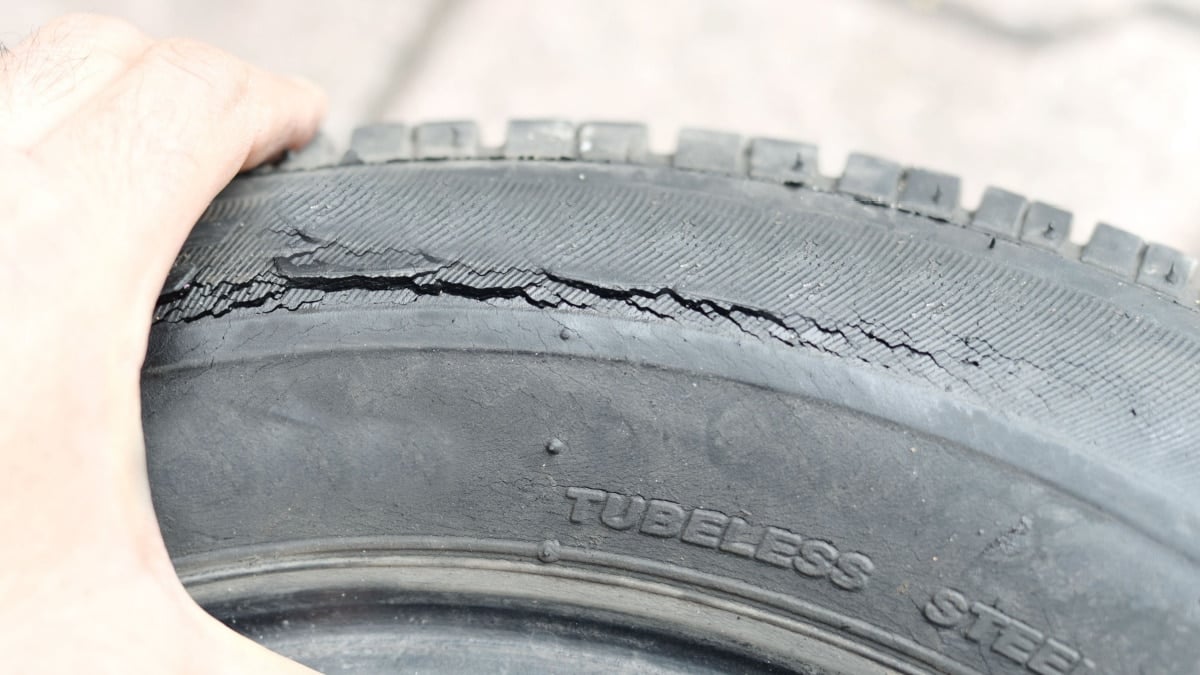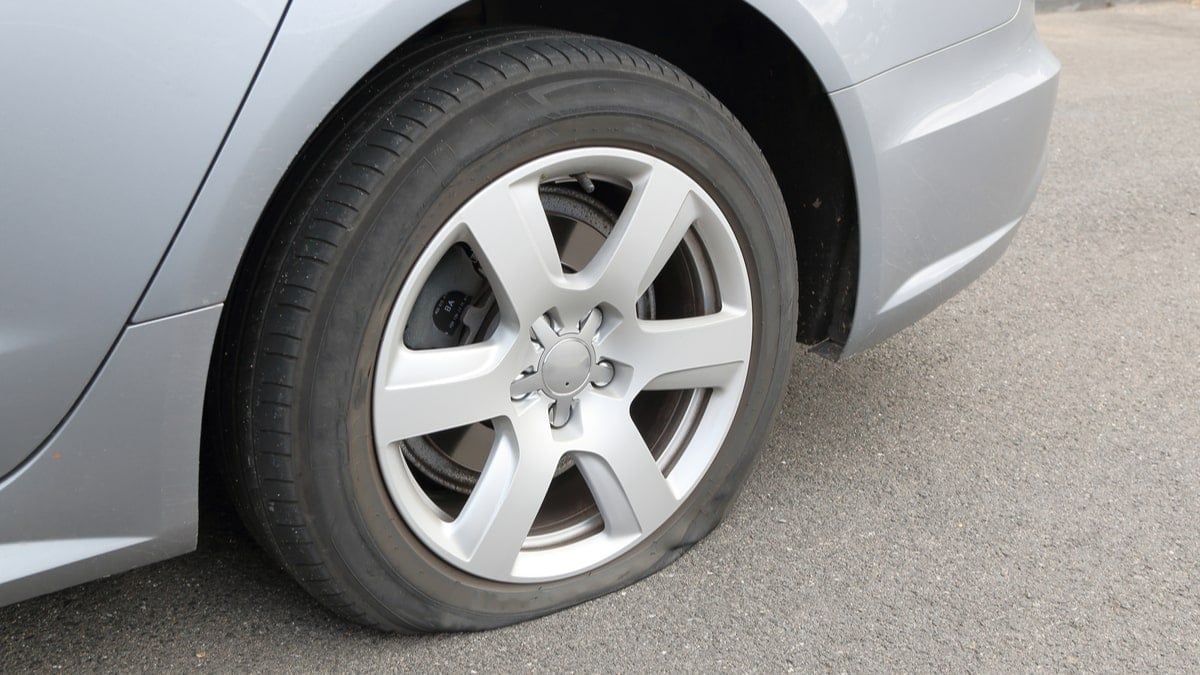With how important your car tires are, it’s vital that you regularly inspect them for unusual wear. One abnormal wear pattern is known as tire feathering. What does this mean, how dangerous is it and what causes it?
In this guide, we cover the basics of feathering tires. We look at what causes it and help you prevent it from occurring. Plus, we answer your most-asked tire questions at the end of this article.
What Does Tire Feathering Mean?
Tire feathering occurs when the tire starts wearing at an angle. One side of the tread block or the tire rib becomes smoother or more worn than the other comparable side. Feathering is also known as tire scuffing or tire cupping.
A new tire has sharp edges on the ribs and tread blocks, while the feathered tire is going to have rounded edges on one side and sharp edges on the other. These wear patches can measure three inches or more in diameter.
What Causes Tire Feathering?
Tire feathering is caused because the rubber bounces as you drive down the road. The tire is not remaining in contact with the road as it should. Bouncing can be caused by bad wheel alignment, worn suspension parts, out of balance tires, a bad bearing, poor tire quality or low air pressure.
Let’s examine these problems in-depth so you know what needs to be done.
1. Bad Wheel Alignment
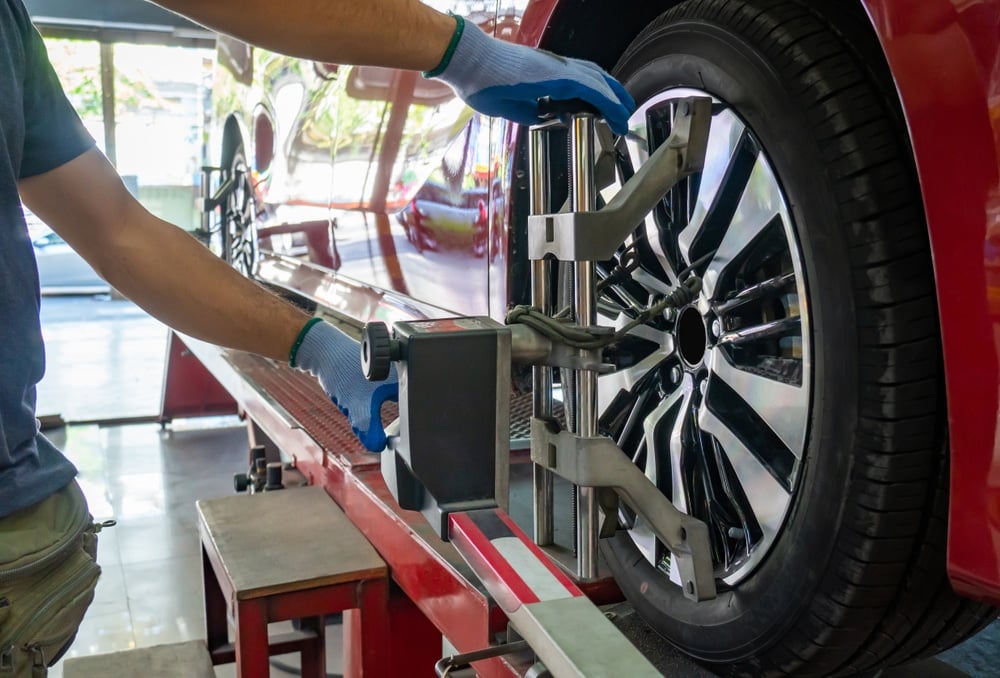
When it comes to aligning the wheels, there are several measurements that must be observed. The caster, toe in/out and camber must all be right for the wheels to remain aligned. Each of these measurements shows a specific orientation with the road.
- Caster: a measure of how far behind or forward the steering axis is in relation to the vertical axis, viewed from the side.
- Toe in/out: the measurement of how your tires turn inward or outward when viewed from above.
- Camber: a measure of the inward or outward angle of the tire as viewed from the front of the vehicle.
Cupping or feathering occurs when the alignment is off, and the tires bounce. Thankfully, it’s also one of the easiest problems to fix.
RELATED: 5 Signs Of A Bad Wheel Alignment and Why you should fix it
2. Worn Suspension Parts
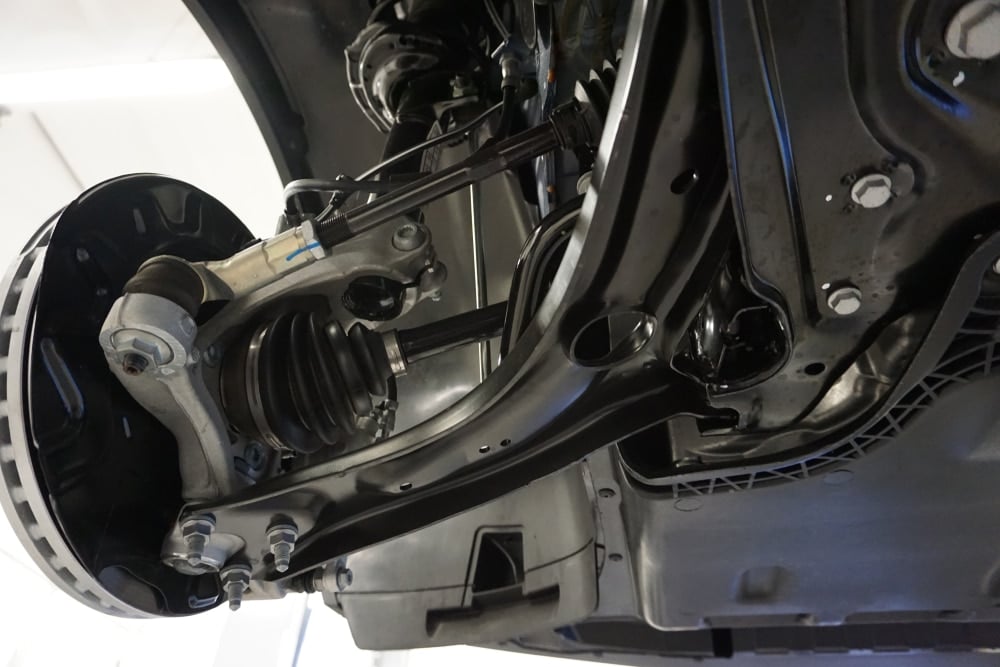
The suspension system is made from many different parts, all working together to create a smooth ride. Shocks and struts are the main components, both designed to be replaced at regular intervals. When the shocks or struts go bad, the ride can become bouncy, making it harder for the tires to remain on the road. You may also hear unusual noises or feel strange vibrations, especially when traveling over a bump.
To fix this problem, you must have the faulty suspension parts replaced. It’s also wise to inspect the suspension system every 50,000 miles to see if anything is worn. Otherwise, if you hear anything unusual, you should take a look at the suspension.
RELATED: Car Suspension Repair Cost
3. Tires Out Of Balance
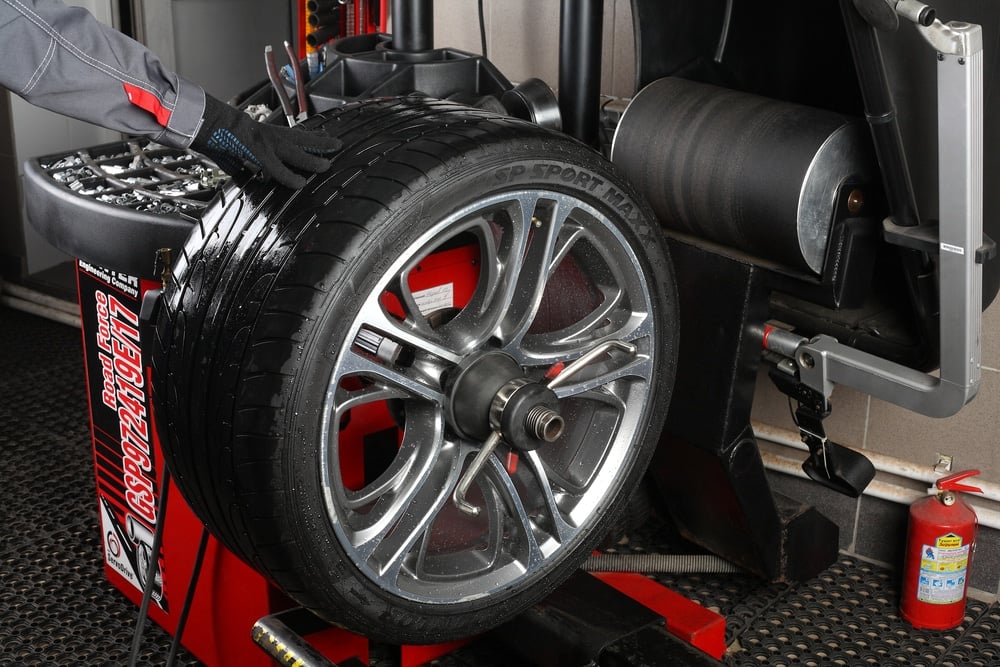
Weight must be evenly distributed across the tire. If the circumference doesn’t distribute the weight correctly, cupping or feathering is going to occur.
The imbalance leads to bouncing and vibrations, causing a bumpy ride. The bumpy handling turns into irregular wear, but you are looking at another easy fix. Simply have the tires balanced to stop the wear and extend tire life.
During a balance service, the tires and wheels get mounted to a special machine. This machine spins the wheel assembly to see where the imbalance is. A technician then installs tire weights to the appropriate sides, ensuring everything remains balanced. This service can be performed at the same time as an alignment.
RELATED: 5 Symptoms Of Unbalanced Tires and Tire Balancing Cost
4. Bad Wheel Bearing
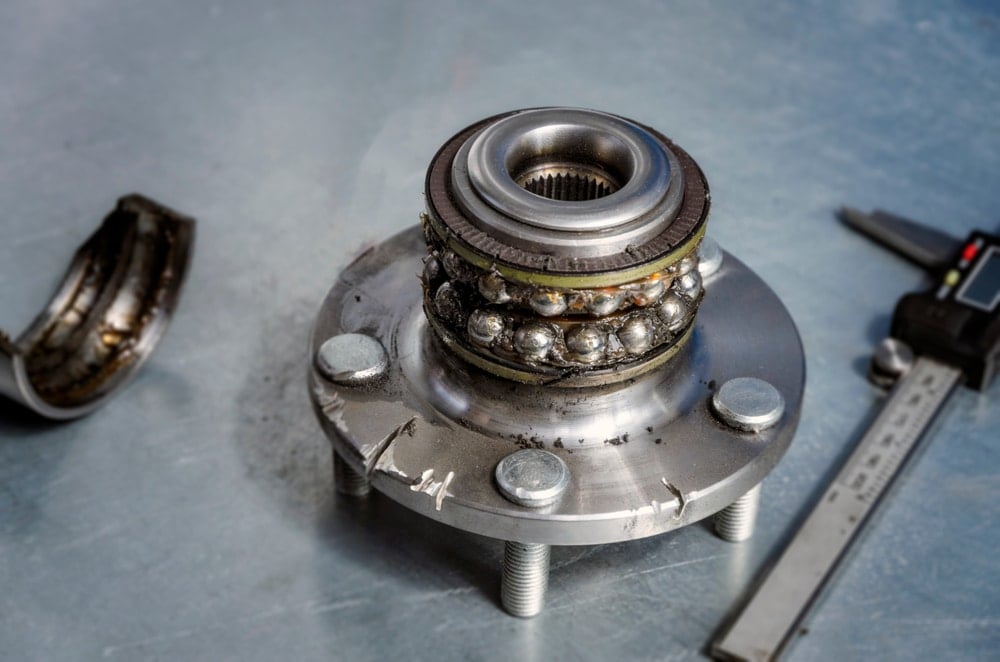
Wheel bearings are responsible for reducing friction when the wheels turn. If you hear strange sounds when turning, a wheel bearing may be the cause. Bad wheel bearings can also lead to tire feathering.
Wheel bearings are meant to last a long time, sometimes more than 100,000 miles. However, grime and dirt can shorten the lifespan. If you drive across uneven terrain often, the bearings can also fail early. On average, you may only spend about $300 per wheel to have the bearings replaced, so it’s not a big deal to repair.
5. Low Tire Quality

When you purchase tires for your car, you are faced with many options, from low-cost cheap rubber to expensive high-end brands. These are not all the same and you get what you pay for.
Cheap tires aren’t durable and often contain thinner rubber material. This material wears differently, especially when exposed to extreme temperatures or rougher roads. If you put cheap tires on your car, you can expect feathering or cupping to occur more frequently.
It might be worth spending the extra on better tires to avoid this problem. The ride will also be more enjoyable.
6. Low Tire Pressure
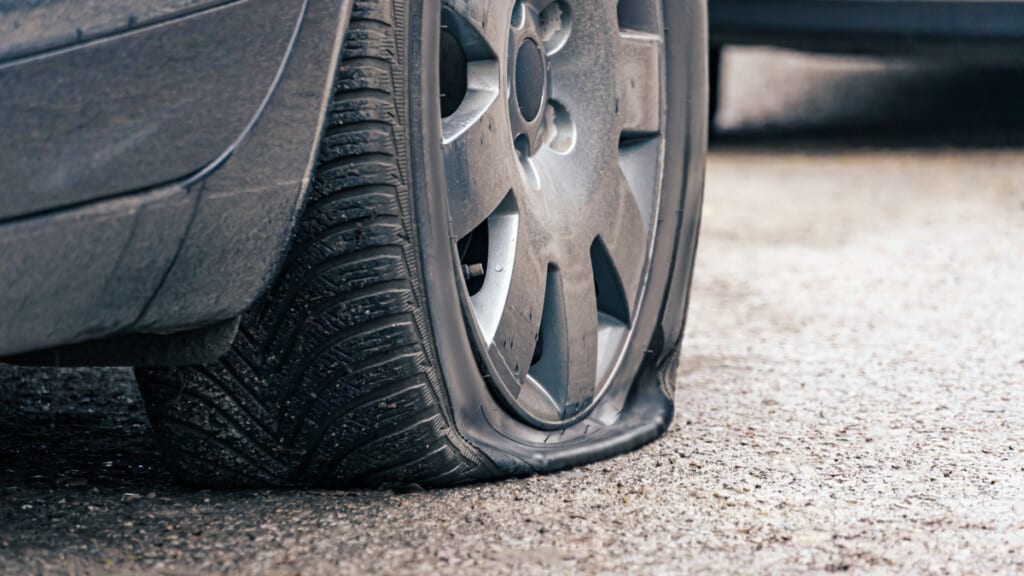
If the tire isn’t inflated to the proper PSI (pound per square inch), the rubber is going to wear abnormally. The tire tread can also wear down faster, forcing you to need a new tire sooner. The automaker specifies the appropriate tire pressures for the front and rear tires. You can find this information in your owner’s manual or on the driver’s side door jamb.
If you run the tires too light, the contact patch doesn’t touch the road as it should. Not only does this lead to increased wear, but also poor handling. Furthermore, the tires could blow out because of the increased stress on the rubber.
As professional mechanics, we recommend checking tire pressures every month. It’s also important to check them whenever the weather changes. Even the NHTSA tells you not to solely trust the tire pressure monitoring system in your vehicle.
Is Tire Feathering Bad?
Your car tires are the only part of your vehicle touching the road. Everything is literally riding on your tires, which is why you must take care of them. If the tires have feathered or cupped, the contact patch isn’t performing its job correctly. Handling is going to be affected, as well as the tire’s lifespan.
Because of these reasons, you should immediately correct the problem and/or have the tires replaced. In some cases, you can have the tires rotated to create a new wear pattern. However, this isn’t possible if the tires are worn too much. If you are ever in doubt, it’s best to talk to a professional tire shop for another opinion.
How to Prevent Tire Feathering
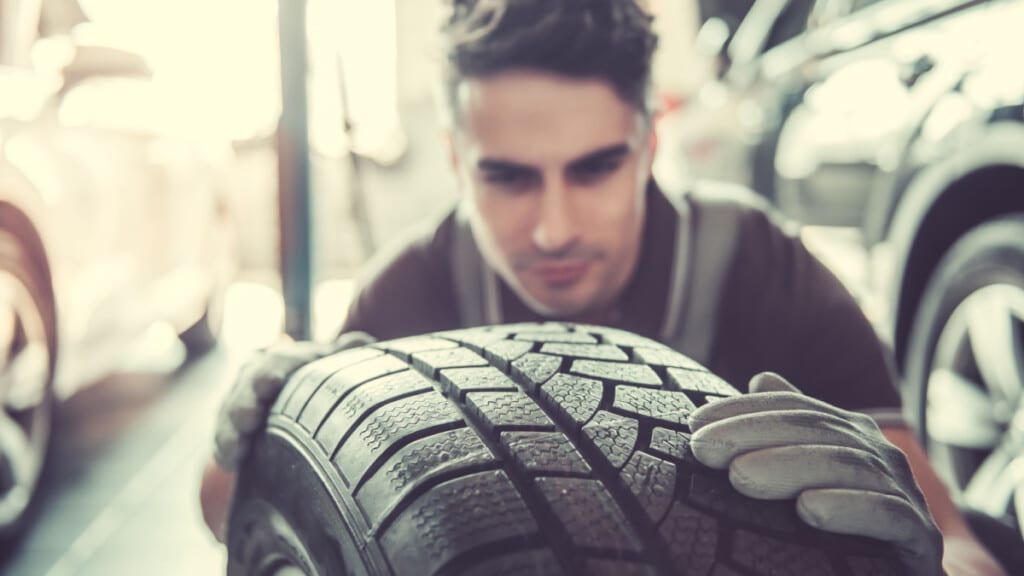
Tire maintenance is the easiest way to prevent tire feathering. Maintaining the tires isn’t a time-consuming job, nor does it cost a lot. In fact, if you maintain the tires, you prevent having to buy new ones prematurely, which saves you money.
Here are a couple of maintenance and prevention tips to keep in mind.
- Check tire pressure every month when the tires are cold.
- Check tire pressure anytime the temperatures change drastically.
- Pay attention to the tire pressure monitor and add air whenever necessary.
- Repair any punctures to the tire immediately.
- Balance tires every 6,000 miles or six months.
- Rotate tires every 6,000 miles or six months.
- Check alignment every year.
- Inspect the tire tread depth every season. You can use a penny or a tire tread gauge tool.
- Replace the tires when the tread gets below 4/32” or other imperfections occur.
If you catch the feathering pattern early enough, you can reverse the damage. By fixing the underlying problem and rotating the tires, the tread wear will change. For this reason alone, it’s important to keep a close eye on your tires. Otherwise, you might allow the feathering to occur too long and replacement of the tires will be necessary.
Can tire feathering be fixed?
You can’t change the damage that’s been done, but you may be able to even out the wear with a tire rotation. Repair the underlying condition that’s causing the feathering. Once that’s done, rotating the tires may help to create more even wear. If the feathering is too severe, the tires need to be replaced.
How do I stop my tires from feathering?
Proper tire maintenance is the only way to prevent feathering. By inspecting the tires, maintaining pressures and performing all recommended services, you can keep feathering from occurring. Once it occurs, resolve the underlying issue and rotate the tires to prevent it from getting worse.
Does tire feathering cause noise?
As the tires fail to make contact with the road, they start to bounce. This problem alone can create a strange sound while heading down the road. The underlying issue can also create noises, such as a bad wheel bearing or failing suspension components.
Can feathered tires cause shaking?
With the tire tread wearing abnormally, the contact patch changes. Any change in the tire tread can lead to handling issues, including shaking. These handling problems can be combined with strange noises, both of which should always be addressed at the first sign of trouble.
Tire feathering may be alarming to see at first, but you don’t have to panic as long as you take prompt action. It’s something that we regularly see when looking at tires, especially if valuable suspension components are wearing out. You can usually get some more life out of the tires if you are willing to fix what needs to be repaired.
We can’t stress enough how important it is to take care of your car tires. Tire maintenance doesn’t cost a lot to keep up with, but replacing the tires prematurely is costly. You should want to keep the tires in good shape for your safety and to save money.
Categories: Tires
